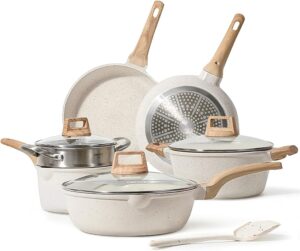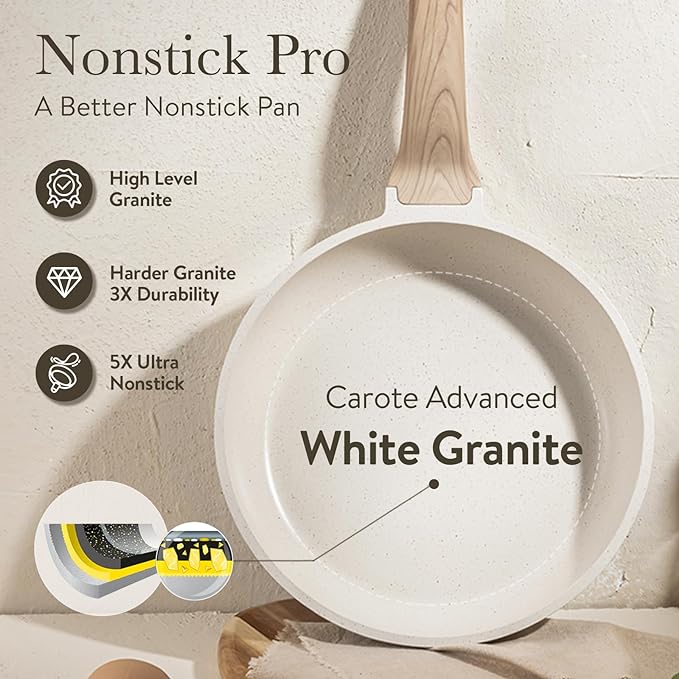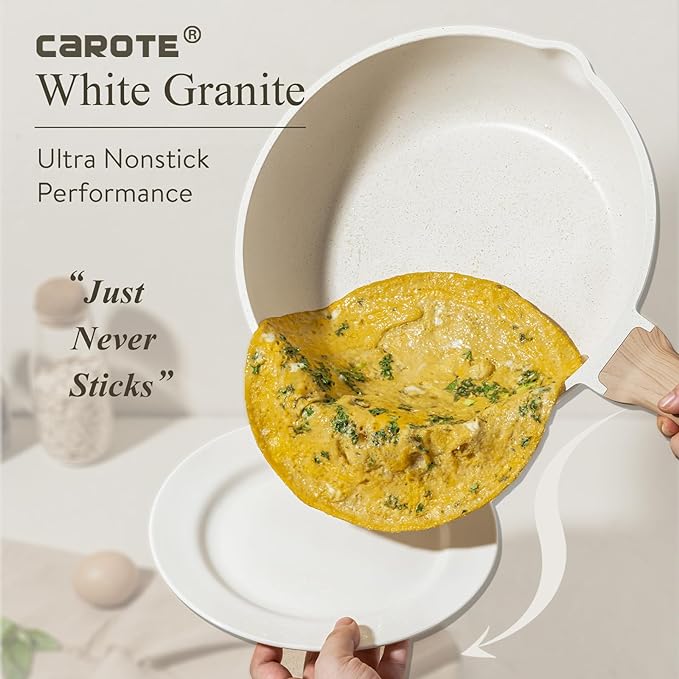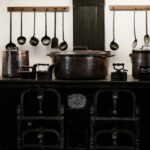Why You Should Never Use Metal Utensils on Nonstick Cookware 2024

Let’s talk about one of the biggest no-nos when it comes to nonstick cookware: using metal utensils on nonstick cookware. Trust me, it’s a mistake you don’t want to make. Here we will discuss why this is such a bad idea and what you should be doing instead.
Table of Contents
The Magic of Nonstick Cookware
First, let’s talk about why nonstick cookware is so awesome. Nonstick pans are typically coated with a substance called polytetrafluoroethylene (PTFE), most commonly known by the brand name Teflon. This coating gives the pan its nonstick properties, making it super easy to cook delicate foods like eggs, pancakes, and fish without them sticking to the surface. This is great because it means you can use less oil or butter, leading to healthier cooking and easier cleanup.
Get Yourself The Perfect Nonstick Pots and Pans Today
The Problem with Metal Utensils on Nonstick Cookware
Alright, so what’s the big deal with metal utensils on nonstick cookware? Here’s the scoop: metal utensils on nonstick cookware, like spatulas, spoons, and tongs, can easily scratch the nonstick coating. When this happens, a couple of bad things follow:
- Damage to the Nonstick Surface: Once you scratch the nonstick coating, it starts to peel and chip away. This not only ruins the nonstick properties of the pan, making it harder to cook and clean, but it also looks pretty gross. Those flakes can also mix into your food—not exactly appetizing.
- Health Risks: When the nonstick coating gets damaged, it can release harmful chemicals into your food. For instance, if the coating is overheated (above 500°F or 260°C), it can break down and emit toxic fumes. These fumes aren’t just bad for you; they can also be harmful to pets, particularly birds, which are very sensitive to airborne toxins.
The Science Behind Metal Utensils on Nonstick Cookware
The nonstick coating on your pan is a polymer, and like all polymers, it’s made up of long chains of molecules. These chains are strong, but they aren’t invincible. When you use metal utensils on nonstick cookware, you create small cuts and nicks in the surface. Over time, these nicks grow and eventually lead to peeling.
Get Yourself The Perfect Nonstick Pots and Pans Today
Now, some of you might be thinking, “But my pan says it’s scratch-resistant!” Yes, many modern nonstick pans come with coatings that are marketed as being more durable and resistant to scratching. However, “resistant” doesn’t mean “immune.” Over time, even the toughest nonstick coatings will wear down if you regularly use metal utensils on nonstick cookware.
Better Utensil Options
So, what should you be using instead of metal utensils on nonstick cookware? Here are some better alternatives that are kind to your nonstick cookware:
- Wooden Utensils: These are classic for a reason. They’re gentle on nonstick surfaces and won’t scratch or damage the coating. Plus, they add a rustic touch to your kitchen!
- Silicone Utensils: These are fantastic because they’re heat-resistant, flexible, and come in all sorts of fun colors. Silicone utensils are perfect for nonstick cookware because they won’t cause any damage, and they’re safe up to very high temperatures.
- Nylon Utensils: These are another good option. They’re also gentle on nonstick coatings, though they might not be as heat-resistant as silicone. Still, they’re a solid choice for most cooking tasks.
Taking Care of Your Nonstick Cookware
Besides avoiding metal utensils on nonstick cookware, there are a few other things you can do to extend the life of your nonstick cookware:
- Avoid High Heat: Nonstick pans don’t like super high temperatures. Stick to low or medium heat to prevent damaging the coating. If you need to sear something at high heat, consider using a stainless steel or cast iron pan instead.
- Proper Cleaning: Don’t use abrasive sponges or scouring pads. Instead, wash your nonstick pans with a soft sponge or cloth and avoid harsh detergents. If there’s stubborn residue, soak the pan in warm soapy water for a bit before gently scrubbing.
- Storage Tips: When storing your nonstick pans, don’t stack them directly on top of each other unless you place a soft cloth or paper towel between them. This prevents scratches and prolongs the life of the coating.
- Replace When Necessary: Even with the best care, nonstick pans don’t last forever. If you notice significant scratches, peeling, or if the nonstick properties are pretty much gone, it’s time to replace the pan. Better to invest in a new one than risk health issues or ruined food.
Get Yourself The Perfect Nonstick Pots and Pans Today
A Word on Nonstick Alternatives
While nonstick cookware is super convenient, it’s not the only option out there. If you’re concerned about the longevity and safety of nonstick coatings, you might want to consider some alternatives:
- Stainless Steel: These pans are incredibly durable and can handle high heat. They don’t have a nonstick coating, but with a little practice, you can cook almost anything without it sticking.
- Cast Iron: When properly seasoned, cast iron can be almost as nonstick as Teflon. It’s heavy, yes, but it’s also incredibly versatile and can go from stovetop to oven with no problem.
- Ceramic Coated: These pans have a ceramic coating that’s free of PTFE and PFOA (another chemical often found in nonstick coatings). They’re generally considered a safer option and can offer good nonstick performance, though they may not be as durable as PTFE coatings.
Wrapping It Up
Using metal utensils on nonstick cookware is a big no-no if you want to keep your pans in good shape and your food safe. Stick to wooden, silicone, or nylon utensils, and follow some basic care tips to keep your nonstick pans performing their best.
Get Yourself The Perfect Nonstick Pots and Pans Today
Read More:
Granite Cookware Vs. Stainless Steel Cookware – Complete Guide
Top 2 Granite Cookware Sets to Buy (Reviewed)
4 Non-toxic cookware that you should buy for cooking. (part 1)







